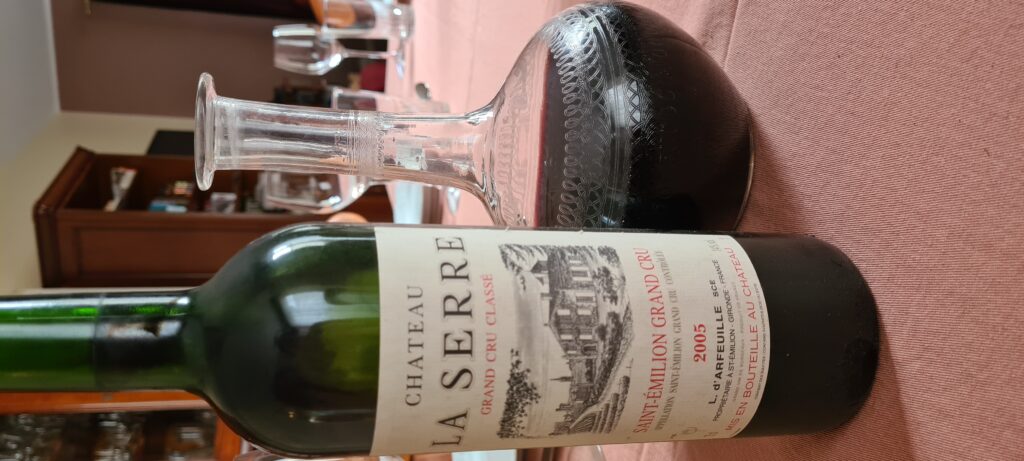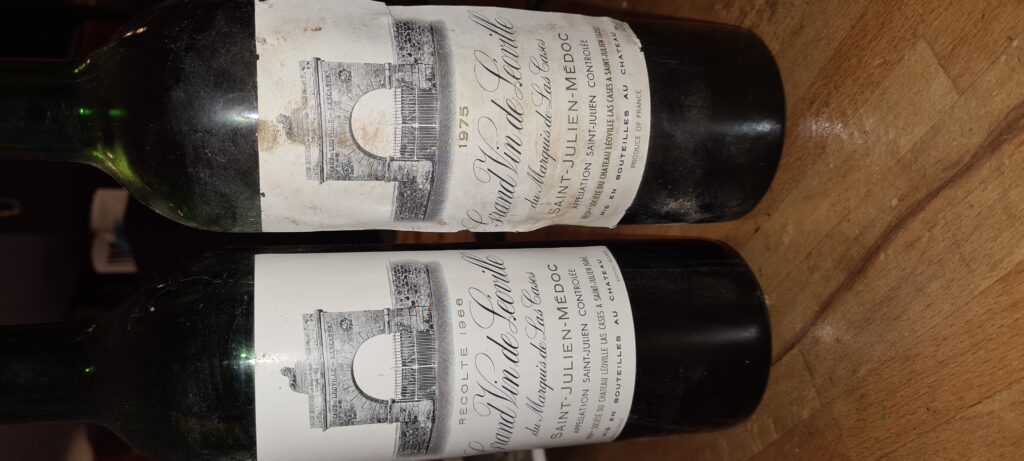Like most English speakers, I am more familiar with the wines of the Médoc (and have tasted every classified growth there) than I am with the wines of the Right Bank. Indeed, my acquaintance with many of the crus classes of Saint-Emilion is limited or non-existent.
I have tried young Château La Serre at tastings, but had never sampled an aged one until this past weekend.
La Serre has 7 hectares of vines on the edge of the limestone plateau, surrounded by Ausone, Bel Air Monange, Pavie Macquin, and Trottevieille. It has been owned by the d’Arfeuille family, with deep roots in the region, since 1956. Former owners of châteaux La Pointe in Pomerol and Toumalin in Canon-Fronsac, they have also been involved in the négociant trade.
The breakdown of grape varieties is 80% Merlot and 20% Cabernet Franc. The vines are an average 35 years old.
Whereas I would probably go on the assumption that a fine 2005 Médoc was too young to drink, I felt that this Saint-Emilion might just be ready to go.
The color was absolutely beautiful, with a deep reddish-purple hue and gentle bricking on the rim. I would probably have guessed a younger wine if tasted blind.
The nose showed fresh, classy, tremendously ripe fruit reminiscent of red fruit jelly. The oak was under control, but my notes say that the bouquet was half-way to the New World in style, not that this is meant in a pejorative way, simply reflecting its exuberance.
The wine proved to be “sweet”, voluptuous and very rich on the palate, with concentrated cherry flavors. It was mouthfilling and unctuous, but minerality from the limestone showed on the aftertaste to provide a counterpoint and the necessary backbone.
I was greatly pleased with this 2005 La Serre, a sensual, delicious wine, which is still shy of its peak. I would definitely seek this wine out in the future.


